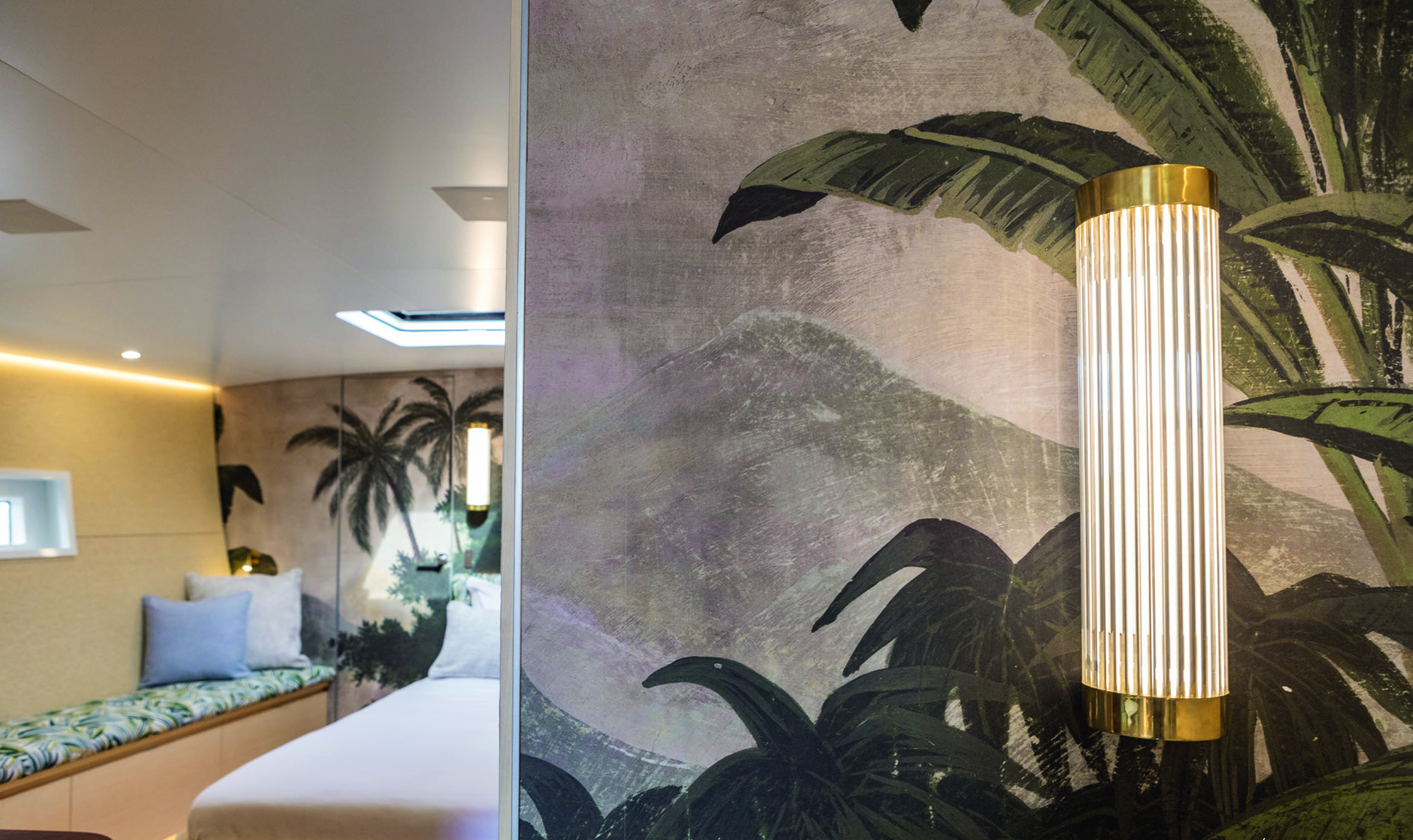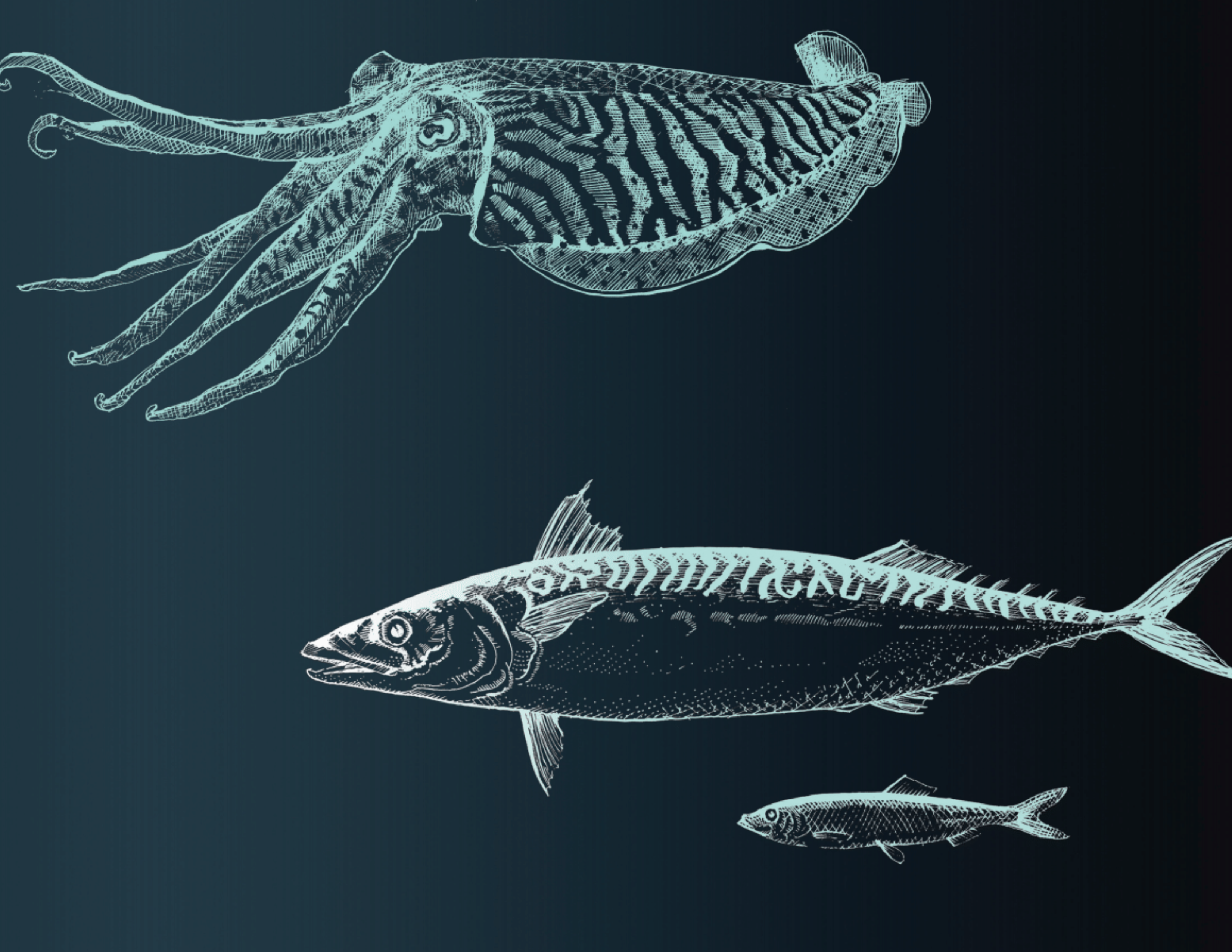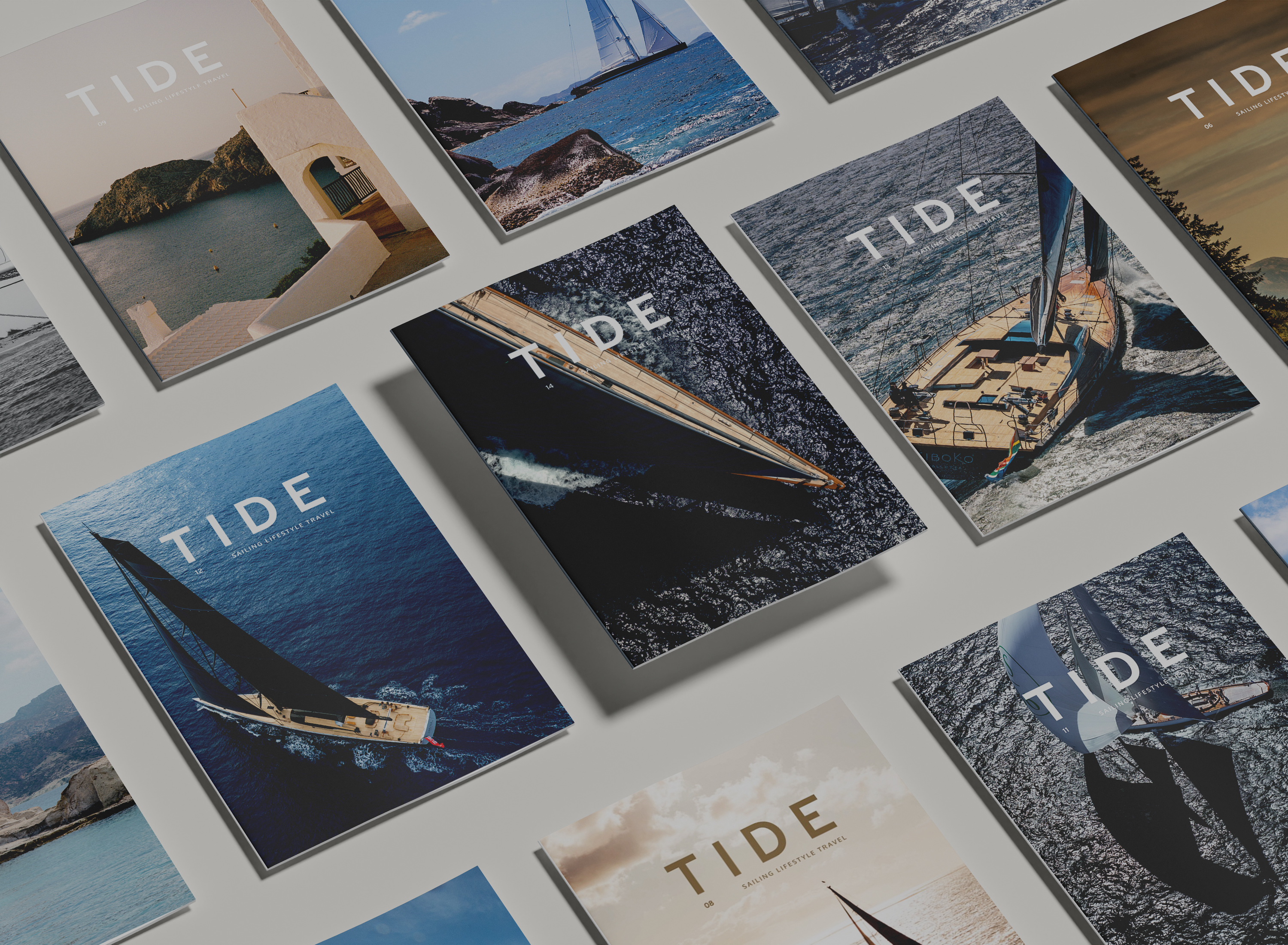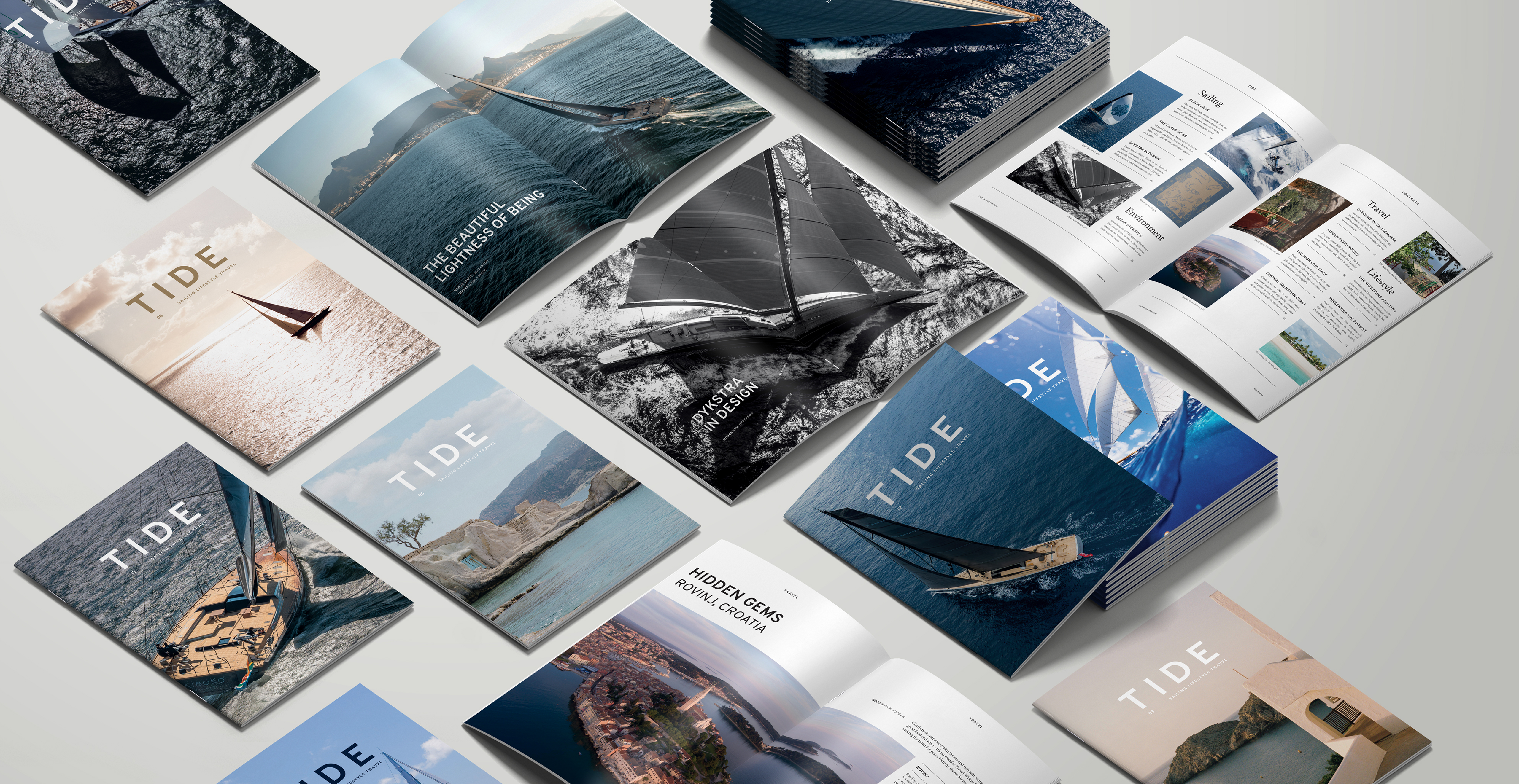From electric cars to eco-friendly systems and appliances running our homes, living a greener life is a hot topic in all our lives. And of course, the wealthy clients who buy yachts are no exception. Indeed, for the new generation of ultra-high net worth individuals whose wealth often comes from less traditional sectors of business such as e-commerce and fintech, the planet is often a primary concern. Their regard for the environment translates into all aspects of their lives, so why should their yachting adventures be any different? As a result of this change in client attitude, questions are being asked of the yachting industry and environmental credentials are increasingly a priority, with most of the industry’s stakeholders engaging, at least to some extent. From the type of yacht a client might choose to own or charter, to the propulsion systems it uses, or how to make the exterior and interior design more sustainable, the times they are a-changing.
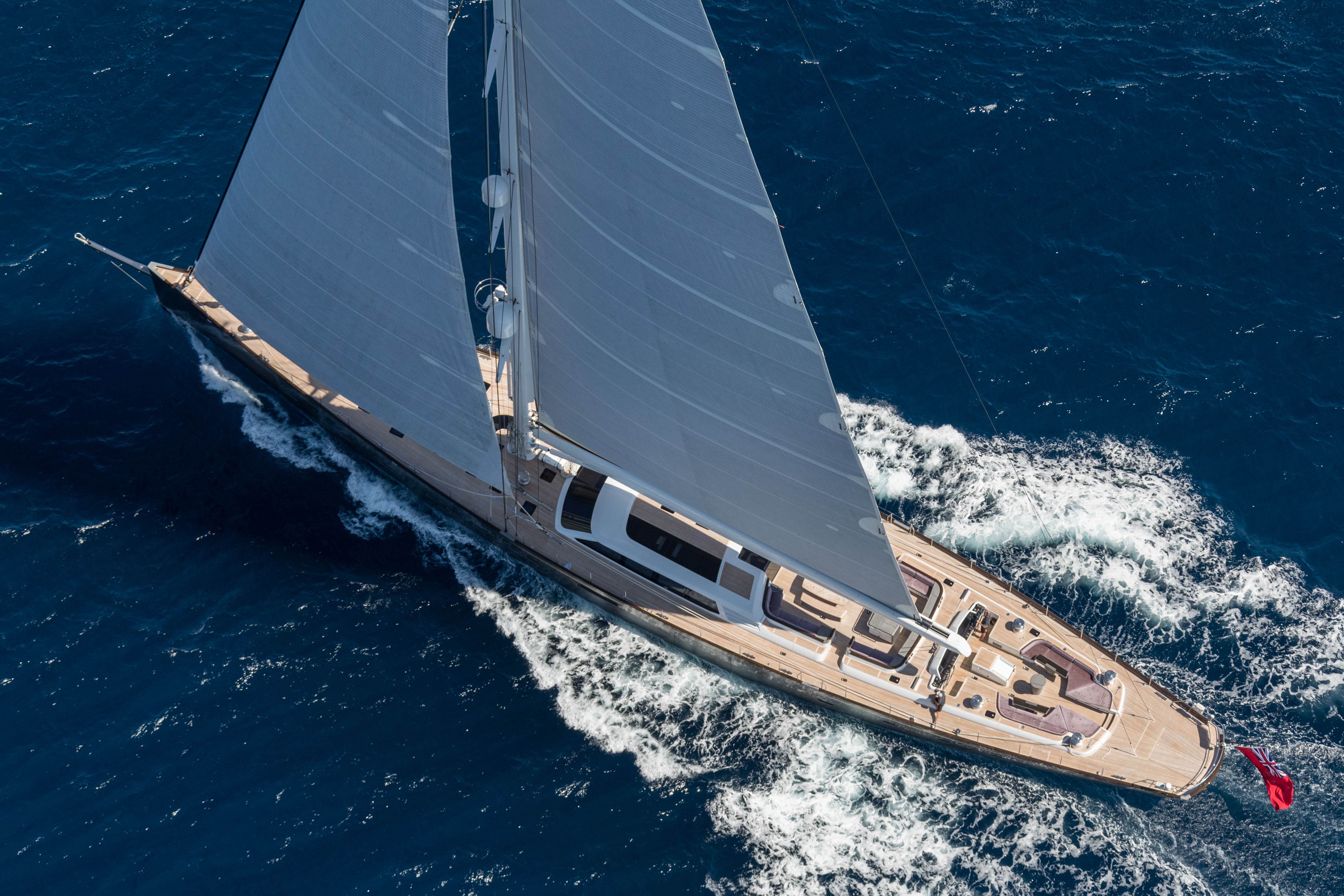
Of course, a small sailing boat by its nature is a sustainable form of mobility, using wind power as it does with no artificial power generation. Unfortunately, this does not hold true when it comes to sailing superyachts, all of which have large engines and generators, carry similar hotel loads to motor yachts, and often motor far more than they sail. That said, as a general rule, a sailing yacht is still more eco-friendly for minimising your impact at sea and, as a result, the is enjoying a minor resurgence in popularity with this new generation of superyacht customer.
However, even if operating a sailing yacht is more sustainable than a motorboat, the building process shares similar carbon footprints and may use very similar materials. Recently, some in the superyachting industry are trying to change this and make the build of the sailing vessel more eco-conscious, considering the carbon cost of their build from the outset and taking steps to minimise it wherever possible.
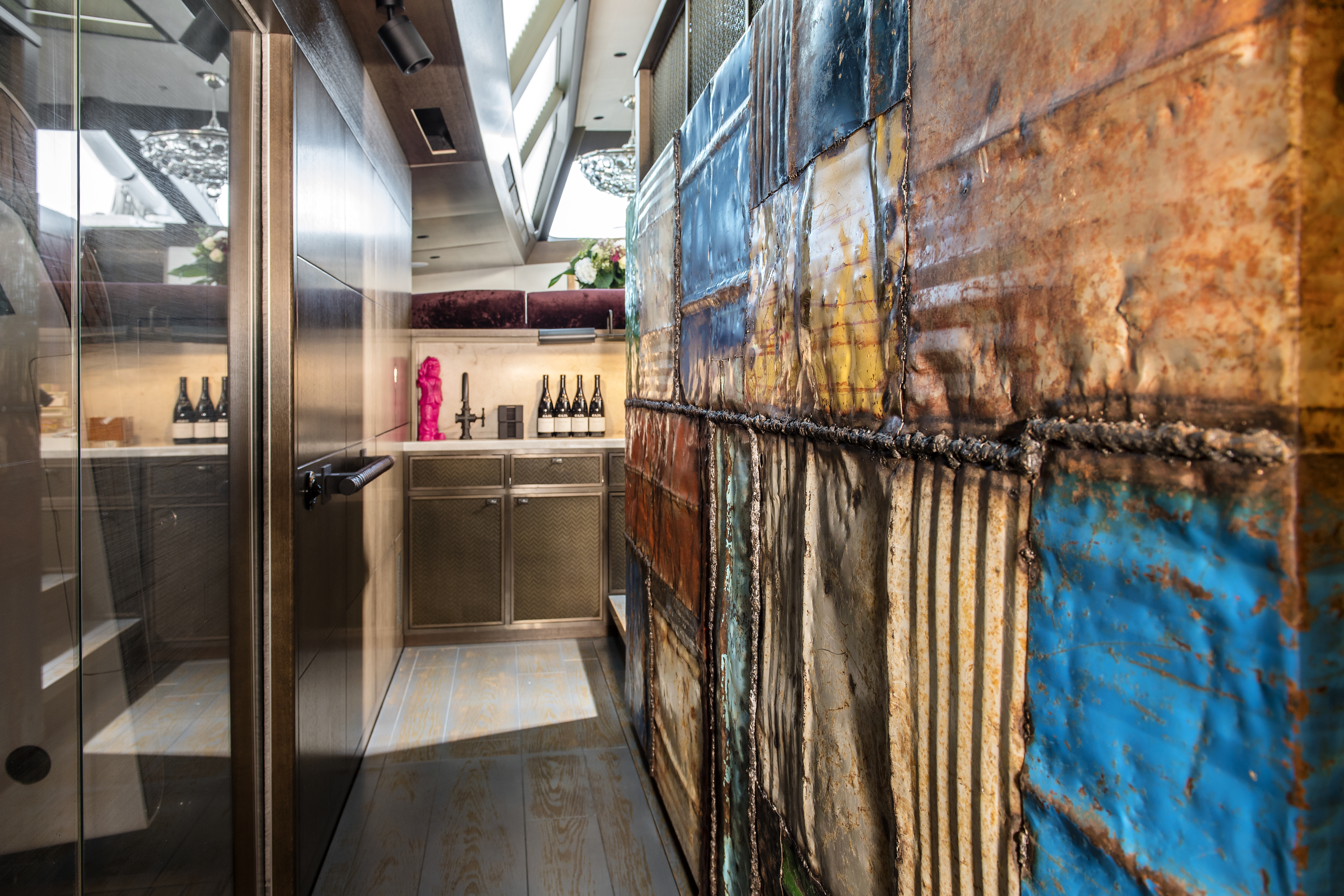
Re-imagining futurestic interiors using materials with a lighter footprint, renowned yacht designers Winch Design have committed time and resources to ensure that sustainable materials are used in every project where possible. “We take careful consideration during the choosing of materials and strive to design spaces that are unique and exclusive, whilst also thinking consciously about the types of materials we use,” says Winch Design’s dedicated sustainability specialist, Alex Parkinson. “Once we have an understanding of the client and their lifestyle, whether it is with a focus on sustainability or not, it is then down to us as a studio to look at the features and understand how we can create designs that are of the unrivalled Winch quality, but with a more conscious approach.”From cork and coconut wood to non-toxic dyes, recycled stone, and even palm leather, alternative sustainable materials are being used more and more in the design of superyacht interiors. Whether a by-product, recycled material, or an abundant commodity, the quality and luxury finish expected in superyacht design can be achieved with these sustainable alternatives while at the same time giving the yacht a lighter footprint. “Quality paired with limitless creativity defines who we are and this is something that we would never compromise on,” continues Parkinson. “Through extensive research and meticulous attention to detail, our materials library is filled with sustainable alternatives that clearly demonstrate how eco-conscious design is not second best, and if anything, enhances the story behind the design.” Winch’s materials library includes a variety of sustainable materials for designers to work with in the studio and online. “We have a great relationship with so many long-standing suppliers and liaise with them regularly to stay current on all the new alternatives being continuously developed,” says Parkinson. “From fruit leaves, to paper, eggshells to fishing nets, the innovation shown within sustainable alternatives is inspiring and really encouraging for us as designers.” As an example, Winch Design recently used orange fibre, a by-product in the manufacture of citrus juices that creates one-of-a-kind fabrics and versatile textiles for upholstery. A different project also used pineapple leaves, which, when treated with a non-chemical manufacturing process, provide a lightweight, versatile and hard-wearing leather alternative while adding subtle texture and an interesting back-story. “Another of the most interesting materials we have had the pleasure to work with is a faux coral finish created from eggshell in bio resin,” says Parkinson.
Hot on yachting sustainability, studio Design Unlimited has also worked with several clients to create yachts that are both beautiful and sustainable. “We are finding more and more of our clients requesting eco-friendly finishes, materials from sustainable sources and low-impact production methods,” says Managing Director Julie Tucker. “We recently specified outdoor fabrics from Vyva Fabrics, which are made from recycled bottles, and also from Sunbrella, who also have a program that sees waste materials transformed into new fabrics.” Tucker believes that there is huge potential for the industry to change for the better and has already noticed an improvement, with suppliers offering a greater selection of sustainable materials. “We were fortunate to come across a company of northern French artisans called Jallu Ebénistes, which specialises in using straw marquetry to create the most beautiful pieces of high-end furniture and fittings,” says Tucker. “We are working on a project with them to create headboards and side tables for a client who is looking for sustainable and alternative pieces of quality furniture.”
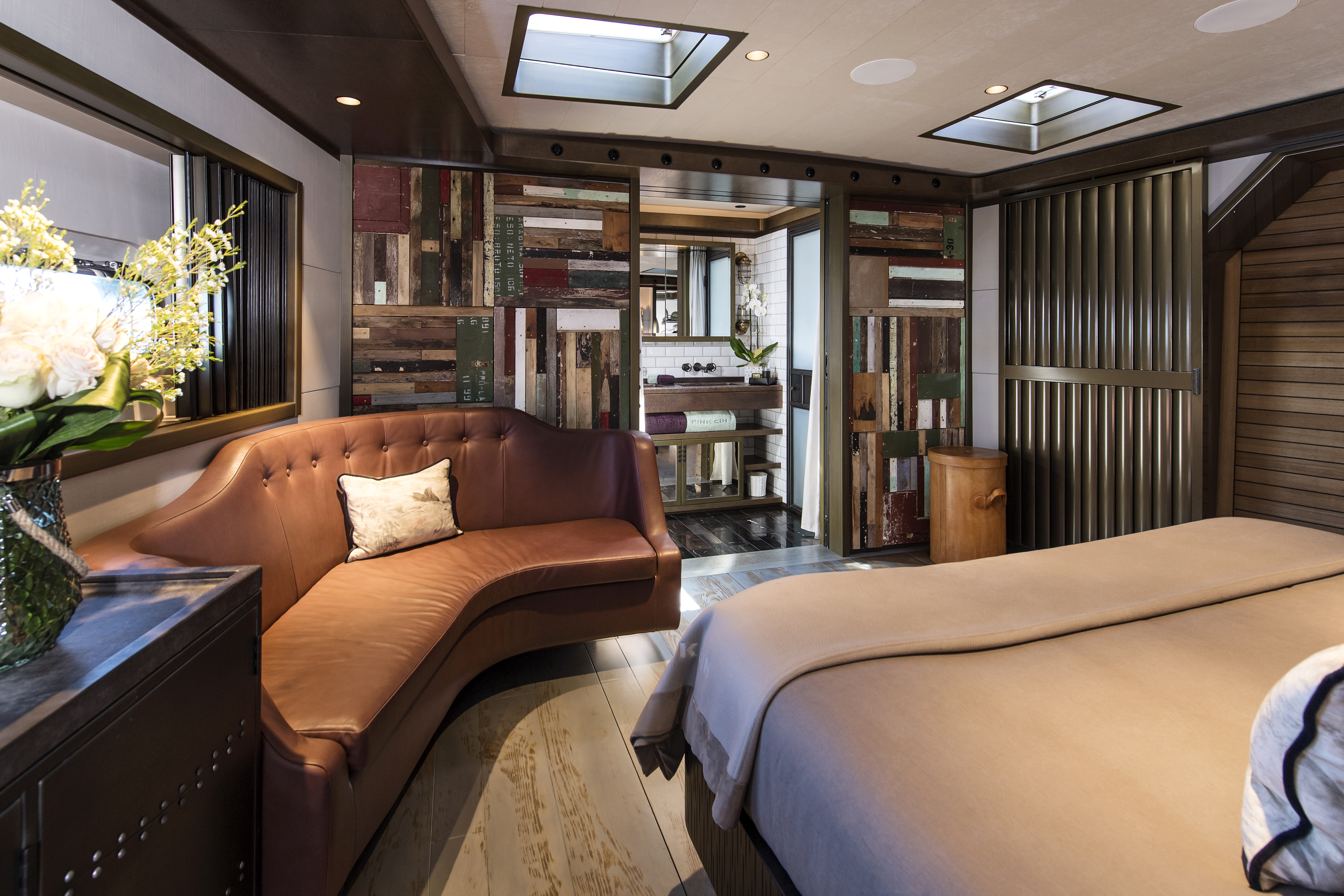
Design Unlimited were responsible for the interior design on board the 53.9m (176.1ft) PINK GIN VI. Here, the Owner commissioned a Cuban artist to work with recycled materials to create art installations that include a wall of recycled oil drums and another made from bits of driftwood and broken beach huts. The designers also worked on the client’s most recent build, the 20.7m (68ft) PINK GIN VERDE from Baltic Yachts. The shipyard describes her as “a potent cocktail of style, sustainability, performance and innovation, pointing the way to zero-emission, low carbon footprint sailing”. The majority of the hull structure uses naturally grown flax, while her decks use a sustainable, rot-free material made from cork-oak. Certified by the Forest Stewardship Council, it meets the “gold standard” in ethical production.
The 81m (265.9ft) three-masted schooner SEA EAGLE II, unveiled in 2020, includes an interior by Mark Whiteley Design that incorporates sustainable Alpi-walnut wall panels. “We worked closely with [builders] Royal Huisman to use a fast grown and sustainable timber for all the interior walling and bulkheads,” says Whiteley. “The natural oak flooring, supplied by Schotten and Hansen, is also sourced from sustainable forests hand selected by their team, and finally inspected by us,” he explains. “The material is then coloured and finished using only pigments supplied by nature, resins, and waxes and oils that are natural like the wood itself, increasing its resistance to the surface and providing natural protection.”
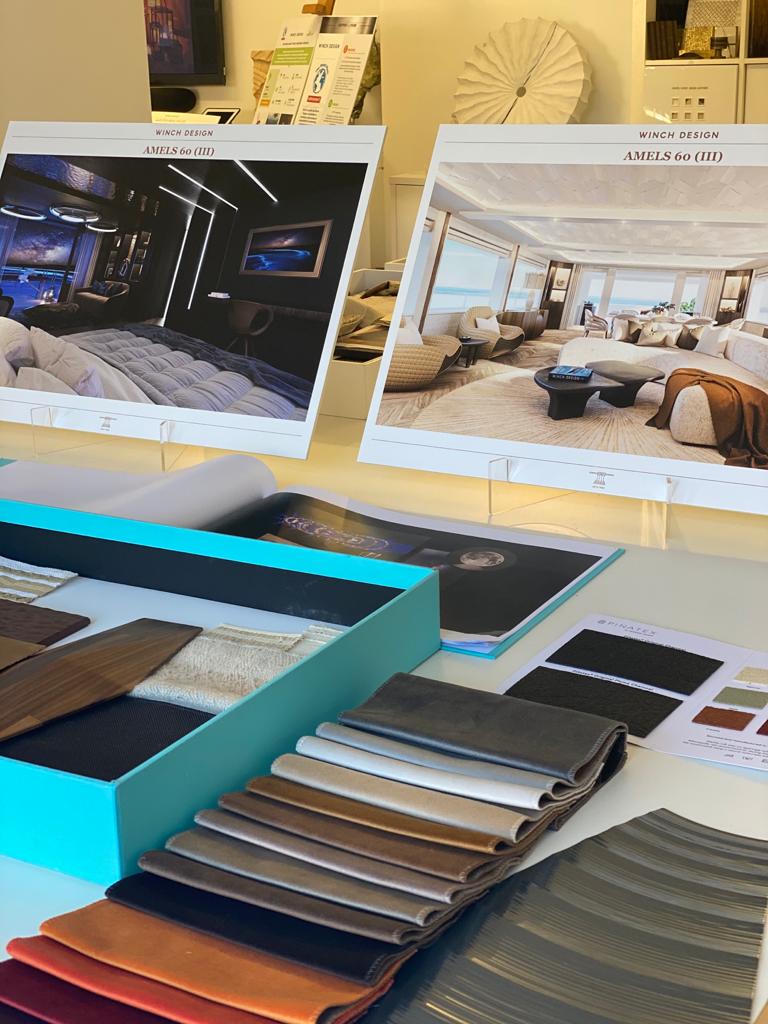
However, sustainable design is not just about using sustainable materials. The designer has a responsibility to future-proof the yacht against the fast-moving pace of environmental regulations that are continually evolving whilst, at the same time, ensuring the ecological integrity of the vessel at the end of its life span. “Not only are clients being ever more swayed by sustainable solutions from an eco-point of view, they are also influenced from a financial one too,” explains Parkinson. “With the speed at which new hybrid technologies are being developed and regulations announced, all yachts will have to adhere to such restrictions sooner or later, so if a yacht doesn’t meet them, it’s value could drastically reduce on the secondary market.”
Working with the marine adventure company Arksen, Design Unlimited have been involved in the interiors aboard the shipyard’s explorer vessels, most recently the Arksen 85. Arksen’s builds are created in line with the principles of the circular economy and, as such, the interior materials are recyclable and a modular cabin system allows for design evolution and adaptation even during its usage. “We even selected the tableware for the yacht from the Finnish lifestyle design company Marimekko – who, like Arksen, supply sustainable products made in balance with the environment and entirely in line with the principles of recycling in the future,” says Tucker.
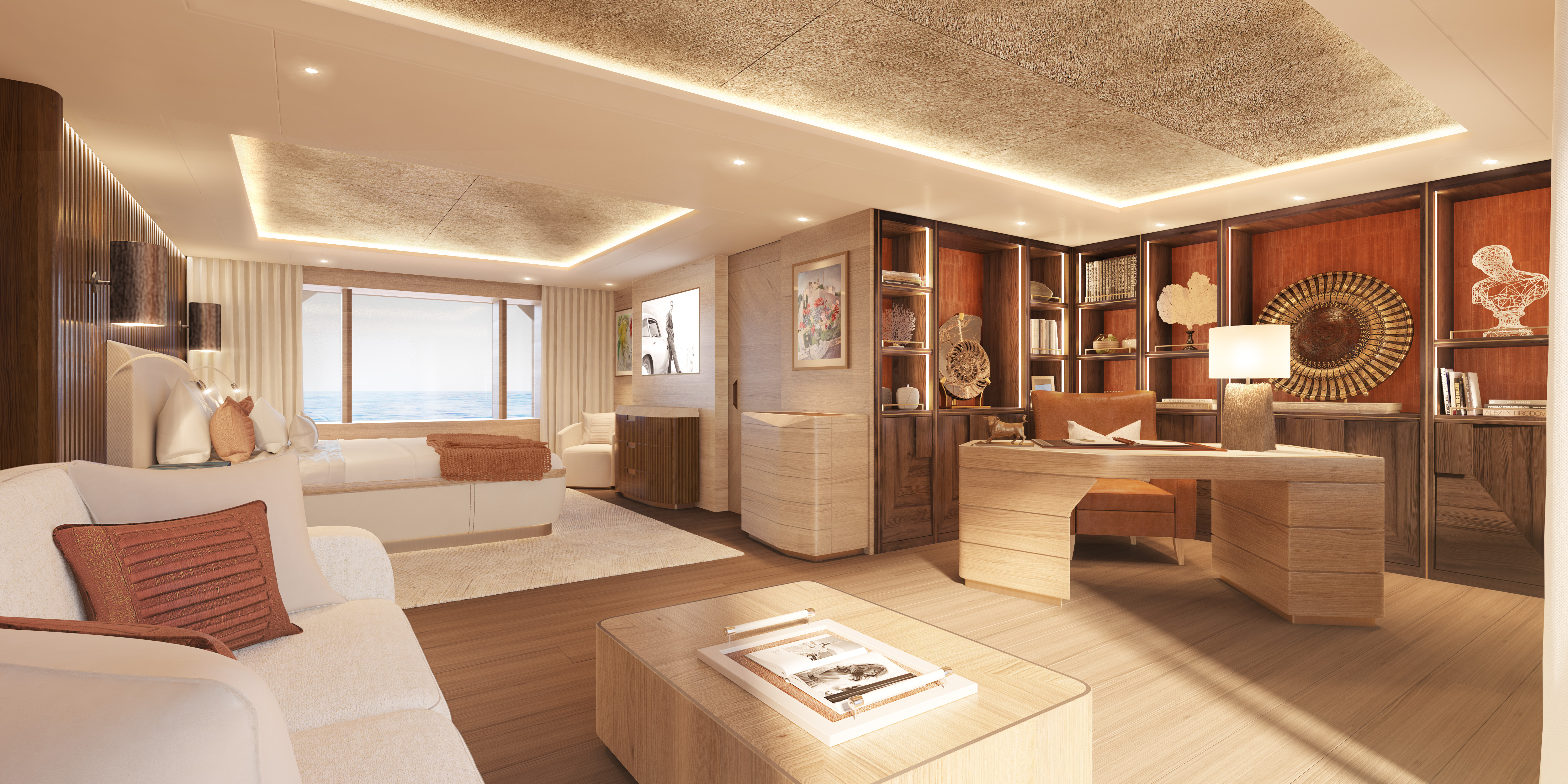
A number of designers have opted to use synthetic, man-made alternatives over natural materials. Composite veneers and other such materials can be manipulated to provide any desired effect whilst, at the same time, they are often more durable than their natural counterpart. Maintenance on yachts is a major part of the running costs, and these synthetic alternatives are in the main part longer lasting and stronger, but most importantly, they are also environmentally responsible. “In the last year or two, many of our suppliers have created sustainable ranges, especially within the fabric industry,” says Parkinson. “Econyl, which is created from nylon waste (fishing nets, carpet flooring and industrial plastic) that would otherwise be polluting the earth, is a popular example of a synthetic material used for carpets on board.”
The number of sailing yacht owners is increasing, and future proofing their desires is inevitably going to be impacted by sustainable considerations, not only due to design preference but also regulatory environments. “The international yacht design community must come together to work on sustainable solutions to ensure we stay relevant,” says Parkinson. “The increase in availability of products is a step towards a more conscious luxury and positive for everyone within the industry.”


